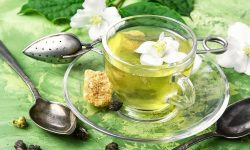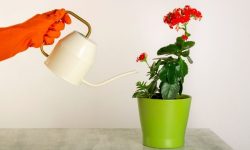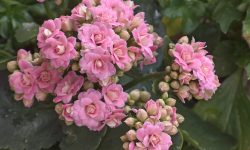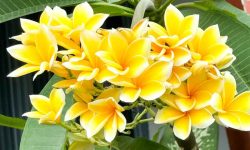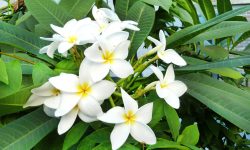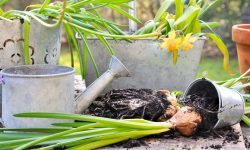Blue Flax, also known as Linum perenne, is a graceful wildflower with soft blue petals that bring a touch of natural elegance to any garden. Beyond its delicate charm, Blue Flax is highly valued for its drought tolerance, easy growth, and low-maintenance nature. For this reason, it has become a favorite among both beginner gardeners and those looking to enrich their landscapes with resilient beauty.
To keep Blue Flax blooming vibrantly and ensure its color lasts throughout the season, proper care is essential. From sunlight and soil conditions to watering, pruning, and propagation, every detail contributes to its long-lasting vitality. This guide will walk you through all the essential steps to care for Blue Flax, helping you achieve healthy growth and a garden filled with lasting, radiant color.
Understanding Blue Flax
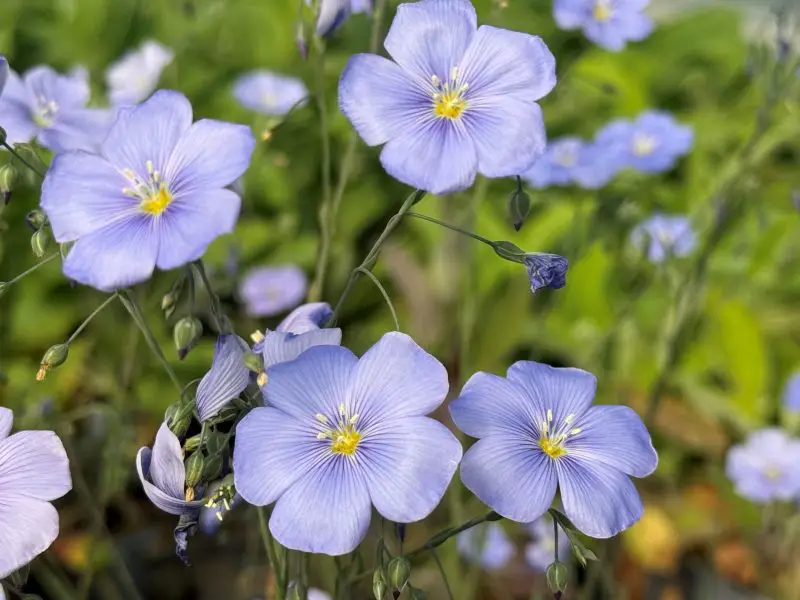
Blue flax (Linum perenne) is a perennial flowering plant native to Europe but widely cultivated across North America and other regions. It is admired for its five-petaled blue flowers that bloom in abundance during the early morning hours, adding soft elegance to meadows, borders, and cottage gardens. Unlike many ornamentals, blue flax offers both ornamental beauty and practical resilience, making it a reliable choice for beginner and experienced gardeners alike.
The plant typically reaches about 1 to 2 feet tall, with slender stems and fine, narrow leaves that create a light, airy texture in garden settings. Blue flax is short-lived as a perennial but compensates by self-seeding readily, ensuring a continuous display year after year. Its graceful growth habit, combined with vibrant blooms, creates a natural meadow-like feel that attracts pollinators while requiring minimal upkeep once established.
Beyond its ornamental appeal, blue flax holds cultural and historical value. Its relatives in the Linum family are known for their use in producing linen and linseed oil. While Linum perenne is primarily ornamental, it carries that heritage of versatility and usefulness. By understanding its background and growth traits, gardeners can better appreciate and cultivate this charming plant in their own spaces.
Choosing the Right Location for Blue Flax
Location plays a critical role in the long-term success of blue flax. This plant thrives in full sun, where it can receive at least six hours of direct light daily. Adequate sunlight ensures abundant blooms and strong stems that do not flop over easily. Blue flax adapts to partial shade, but fewer flowers and weaker growth may occur in those conditions, making sunny spots the most rewarding choice.
Equally important is soil condition. Blue flax performs best in well-drained, sandy, or loamy soils that mimic its natural meadow habitat. Heavy clay or consistently wet soils should be avoided, as they encourage root rot and shorten the plant’s lifespan. Amending the soil with sand or compost can enhance drainage and create the perfect growing medium. Planting blue flax in raised beds or slopes also ensures water does not linger around its roots.
Air circulation is another consideration often overlooked. Planting in open areas with good airflow reduces humidity levels around the foliage, minimizing the risk of fungal problems. Whether in a flower border, wildflower meadow, or rock garden, selecting the right location guarantees your blue flax receives the environmental conditions it needs to thrive and bloom beautifully throughout the season.
Soil Preparation for Healthy Growth
Soil preparation is the foundation of successful blue flax care. Since the plant prefers well-drained soil, gardeners should begin by assessing the native soil type. Sandy or loamy soils usually provide the best results, but even heavier soils can be improved with amendments. Adding coarse sand or organic matter such as compost enhances texture, boosts fertility, and ensures roots develop properly without sitting in excess water.
The soil’s pH is another critical factor. Blue flax grows well in slightly acidic to neutral soils, typically ranging from 6.0 to 7.5 on the pH scale. Testing the soil before planting helps determine if adjustments are needed. Lime can be added to raise pH in overly acidic soils, while sulfur may be used to reduce alkalinity. Striking the right balance promotes nutrient availability and supports healthy plant metabolism.
Mulching after planting provides further benefits by regulating soil moisture, suppressing weeds, and protecting delicate roots from temperature fluctuations. However, mulch should be applied lightly around the base to avoid suffocating young stems. With careful soil preparation, gardeners can create a supportive environment that nurtures blue flax from the very beginning, ensuring robust plants and more prolific flowering over time.
Planting Blue Flax Successfully
Planting blue flax begins with selecting healthy seeds or nursery plants. Seeds can be sown directly into prepared soil in spring or fall, depending on regional climate. Direct sowing ensures roots establish naturally in their final location, reducing transplant shock. Nursery plants, on the other hand, offer a head start and are particularly useful for gardeners who want quicker blooms in their first year.
Spacing is crucial when planting. Blue flax should be spaced about 10 to 12 inches apart, allowing ample room for air circulation and preventing overcrowding as plants mature. Gently pressing seeds into the soil without burying them too deeply encourages faster germination, as light aids the process. Watering immediately after planting helps settle the soil and initiates seed development or transplant establishment.
Patience is key, as seedlings may take a few weeks to appear, and blooms often emerge in the second year for perennials. Once established, blue flax requires minimal intervention, rewarding gardeners with delicate blossoms that return season after season. By following best practices during planting, you set the stage for a garden filled with lasting color and graceful beauty.
Watering Needs and Best Practices
Watering is a vital aspect of caring for blue flax, especially during the establishment phase. Young plants and seedlings require consistent moisture to develop deep, healthy roots. Regular watering during dry spells ensures seedlings do not wither before they gain strength. However, once established, blue flax becomes remarkably drought-tolerant and thrives with minimal supplemental water, making it a low-maintenance choice for water-wise gardens.
Overwatering is one of the most common mistakes gardeners make with blue flax. Excessive moisture weakens the roots and increases the risk of fungal diseases. Always check the soil before watering, ensuring the top inch feels dry before adding more. Deep but infrequent watering is recommended, as it encourages roots to grow deeper and enhances resilience during hot, dry periods.
Mulching can help balance moisture levels by preventing rapid evaporation in summer while also keeping soil temperatures stable. With proper watering practices, you not only ensure healthy growth but also maintain a garden environment where blue flax can bloom profusely and extend its vibrant display throughout the season.
Sunlight Requirements for Strong Blooms
Blue flax thrives in sunny environments, and providing sufficient light is essential for achieving abundant, long-lasting blooms. At least six hours of direct sunlight per day allows the plant to photosynthesize effectively, producing the energy needed for flower production and overall vigor. In shaded or partially shaded areas, plants may become leggy, with fewer and less vibrant blossoms.
Morning sunlight is particularly beneficial, as it dries dew from the leaves and reduces the likelihood of fungal issues. South-facing garden beds or open meadows are ideal spots where plants can bask in sunlight throughout the day. In hotter climates, a bit of afternoon shade may help prevent stress, but excessive shade should be avoided.
Ensuring proper exposure also enhances the plant’s natural resilience. Strong stems, healthy foliage, and prolific flowering are direct results of consistent sunlight. By prioritizing light when selecting a planting location, gardeners set the foundation for blue flax that not only survives but thrives with season after season of colorful beauty.
Fertilization for Maximum Color
While blue flax is not a heavy feeder, proper fertilization enhances its bloom quality and overall health. Too much fertilizer, especially nitrogen-rich formulas, leads to lush foliage growth at the expense of flowers. Therefore, balanced or phosphorus-rich fertilizers are best suited for supporting vibrant and lasting blooms.
Applying a light dose of fertilizer in spring as new growth begins helps the plant build energy reserves for flowering. Organic options, such as compost or well-rotted manure, enrich the soil naturally while improving texture and microbial activity. Slow-release granular fertilizers are another excellent choice, as they provide steady nutrients over time without overwhelming the plant.
Avoid excessive fertilization throughout the growing season, as this disrupts the plant’s natural balance. Instead, aim for moderate applications tailored to your soil’s needs, as revealed by a soil test. With thoughtful fertilization practices, gardeners can encourage blue flax to display its full ornamental potential, producing blossoms that last longer and shine brighter in the landscape.
Pruning and Deadheading Techniques
Pruning and deadheading are important for extending the blooming season of blue flax. While each flower lasts only a single day, the plant produces many buds that open successively, creating a long-lasting display. Removing spent blooms promptly encourages the plant to continue producing new flowers rather than diverting energy into seed production.
Cutting back stems after flowering helps maintain a tidy appearance and prevents the plant from becoming too leggy. Midseason pruning also stimulates fresh growth and may even trigger a lighter second flush of blooms. For gardeners who prefer natural self-seeding, leaving some seed heads intact provides a way for the plant to regenerate naturally.
At the end of the season, cutting plants back to the ground helps prevent disease buildup and prepares them for winter dormancy. By adopting consistent pruning and deadheading practices, gardeners can enjoy healthier plants, longer bloom periods, and a cleaner, more organized garden space.
Seasonal Care Guide for Blue Flax
Spring Care
Spring marks the awakening of Blue Flax, and thoughtful attention during this season sets the tone for its overall health. Begin by gently clearing away winter debris, old stems, or fallen leaves to allow sunlight and air circulation around the base. Apply a layer of compost or a slow-release balanced fertilizer to enrich the soil and provide nutrients for vigorous root and shoot growth. Ensure the plant receives at least six hours of direct sunlight, as this supports strong stems and abundant budding.
Water consistently but avoid oversaturation, since soggy conditions can cause root rot. Spring is also the perfect season for sowing new seeds directly in the ground or transplanting seedlings, as the soil is warm enough to encourage quick germination. A light mulch can help retain soil moisture and suppress weeds during this active growth phase. Proper spring care ensures Blue Flax develops sturdy roots, resilient stems, and the energy it needs to thrive throughout the warmer months, laying the foundation for a stunning bloom.
Summer Care
Summer is when Blue Flax truly shines, producing waves of delicate blue flowers that brighten up the garden. To maintain this display, keep the soil slightly moist during hot periods without allowing water to pool around the roots. Apply mulch to moderate soil temperature and conserve moisture, reducing stress on the plant during extreme heat. Provide at least six to eight hours of full sun daily for peak blooming performance.
Monitor the plant for signs of stress such as wilting or yellowing foliage, adjusting care as needed. Deadhead faded blooms to encourage additional flowering and maintain a tidy look. A diluted liquid fertilizer applied once in mid-summer can replenish nutrients lost during continuous blooming. Check regularly for pests or diseases, although Blue Flax is generally hardy. With proper attention, your Blue Flax will not only provide vibrant summer color but also continue producing healthy seeds that can be used for future plantings, keeping your garden thriving season after season.
Fall Care
As fall approaches, Blue Flax naturally begins to slow down after its energetic summer bloom. At this stage, reduce watering gradually to match the plant’s declining growth rate. Stop fertilization altogether, allowing the plant to redirect energy toward its roots. Trim away faded or diseased stems to maintain plant health and prevent fungal issues from developing in cool, damp conditions. Cleaning up around the base also minimizes the risk of pests overwintering in plant debris.
Fall is also the time to collect seeds if you wish to propagate Blue Flax. Wait until the capsules are dry before carefully harvesting, then store them in a cool, dark location for spring sowing. In regions with cold winters, apply a light mulch to protect the root zone from frost damage. This insulation helps the plant transition smoothly into dormancy. With the right fall care, Blue Flax will build resilience against harsh weather and emerge stronger and healthier when the growing season returns.
Winter Care
During winter, Blue Flax shifts into dormancy, conserving energy beneath the soil surface. In mild climates, the plant may retain some green foliage, requiring only minimal attention. In colder regions, the above-ground stems will die back completely, which is a natural process. Resist the urge to overwater, as Blue Flax requires drier soil while dormant to avoid root issues. Instead, focus on providing steady but minimal moisture when winter is unusually dry.
A protective mulch layer is highly beneficial during winter, insulating the root system from extreme temperature fluctuations. Refrain from applying fertilizer or heavy pruning, as this can disturb the plant’s rest period. If grown in containers, move pots to sheltered areas or wrap them for additional protection. By respecting Blue Flax’s natural dormancy and shielding it from severe frost, you ensure that its underground system remains vigorous. With patient winter care, the plant will return in spring with renewed strength, ready to fill your garden with lasting, radiant beauty.
Common Pests and Diseases
Aphids and Other Insects
Aphids are among the most common pests affecting Blue Flax, especially during periods of active growth in spring and summer. These tiny insects cluster on stems and leaves, sucking plant sap and weakening overall vigor. Infestations often lead to curled leaves, yellowing foliage, and reduced flowering. In addition to aphids, spider mites can become problematic in hot, dry conditions, creating fine webbing and further stressing the plant. Left unchecked, these insects may significantly reduce both the beauty and health of Blue Flax.
To manage these pests, begin with natural approaches such as hosing down plants with water to dislodge insects or introducing beneficial predators like ladybugs. In more severe cases, use insecticidal soap or neem oil, which effectively controls infestations without harming pollinators. Maintaining strong plant health through proper watering and soil care also makes Blue Flax less vulnerable to pests. Regular inspections help you catch problems early, ensuring the plant continues blooming vibrantly without interruption from destructive insects.
Fungal Diseases and Root Issues
Blue Flax is generally resilient, but improper growing conditions can make it susceptible to fungal diseases and root problems. One of the most serious concerns is root rot, which develops in poorly drained soils or with excessive watering. Symptoms include stunted growth, yellow leaves, and eventual plant collapse. Powdery mildew, another common fungal issue, appears as a white powdery coating on leaves, which limits photosynthesis and reduces flowering potential. These diseases thrive in humid or overcrowded environments where air circulation is limited.
To prevent fungal issues, always plant Blue Flax in well-drained soil and avoid waterlogged conditions. Space plants adequately to promote airflow and reduce humidity around the foliage. If powdery mildew appears, remove affected leaves and apply a fungicidal spray to contain its spread. For root rot, the best solution is prevention through proper drainage and moderate watering. By addressing fungal and root concerns promptly, you ensure Blue Flax maintains its strength, allowing it to thrive and provide consistent, lasting color in the garden.
Propagation of Blue Flax
Propagating Blue Flax is a rewarding process that allows gardeners to expand their plant collection or share its beauty with others. The most common method is by seed, as Blue Flax readily produces numerous seed capsules after flowering. Seeds are easy to collect once the capsules turn brown and dry in late summer or fall. Sowing them directly outdoors in early spring or fall often produces excellent results, as the seeds benefit from natural cold stratification during winter. Starting seeds indoors in seed trays is also possible, though direct sowing tends to produce stronger plants better adapted to their environment.
In addition to seeds, Blue Flax can be propagated through division. This method is ideal for established clumps that have grown too dense or begun to spread extensively. Dividing every few years not only produces new plants but also rejuvenates older ones, keeping them vigorous and attractive. Early spring or fall, when temperatures are mild, is the best time for this process. Carefully dig up the clump, separate the root sections, and replant them in well-prepared soil with good drainage. Adequate watering after division helps the new plants establish quickly.
Choosing the right propagation method depends on your gardening goals. Seed propagation is excellent for producing large numbers of plants and naturalizing them across a meadow or wildflower area. Division, on the other hand, provides faster results and ensures the new plants are identical to the parent. Both approaches strengthen the presence of Blue Flax in your garden while enhancing its longevity and charm. With thoughtful propagation, you can enjoy its delicate blue blooms in greater abundance year after year, enriching both your landscape and biodiversity.
Companion Planting with Blue Flax
Blue Flax pairs beautifully with a wide range of garden plants, making it an excellent choice for companion planting. Its airy stems and delicate blue blooms complement bolder flowers, adding softness and contrast to mixed borders. Planting Blue Flax alongside perennials like coreopsis, blanket flowers, or black-eyed Susans creates a vibrant tapestry of color that lasts through the growing season. The gentle hues of Blue Flax also balance the intensity of brighter shades, providing harmony in any garden design.
In addition to visual appeal, Blue Flax supports ecological diversity by attracting pollinators. Bees and butterflies frequent its blossoms, making it an ideal companion for other nectar-rich flowers such as lavender, echinacea, or bee balm. Together, these plants not only enhance the visual charm of the garden but also strengthen the habitat for beneficial insects. By combining species with overlapping bloom times, you can ensure continuous activity and life in the garden from spring through late summer.
Blue Flax also integrates well into naturalized plantings and meadow-style landscapes. Its fine foliage and slender stems mingle easily with ornamental grasses like blue fescue or little bluestem, producing a dynamic blend of textures. The plant’s drought tolerance makes it a perfect match for other low-maintenance, water-wise species, creating sustainable gardens that thrive with minimal input. Through thoughtful companion planting, Blue Flax transforms from a single feature into part of a cohesive, colorful, and environmentally beneficial garden display.
Mistakes to Avoid and How to Solve
Overwatering and Poor Drainage
One of the most frequent mistakes gardeners make with Blue Flax is giving it too much water or planting it in compacted, poorly drained soil. Although the plant appreciates some moisture, excessive water creates soggy conditions that suffocate roots and invite fungal infections. Root rot is particularly devastating, as it weakens the plant gradually until collapse. Yellowing foliage is often misread as drought stress, leading to even more watering and accelerating the problem.
To resolve this, always check soil moisture before watering and ensure conditions allow excess water to drain away. Amending heavy clay soil with sand, gravel, or organic compost improves texture and drainage. Raised beds also work well in areas with persistent wetness. When watering, focus on deep but infrequent sessions that reach the root zone without keeping the soil constantly wet. Mulch lightly to conserve moisture without trapping excess water. With these practices, Blue Flax remains healthy and vigorous, avoiding one of the most damaging care errors.
Neglecting Spread Control
Another common mistake is overlooking the self-seeding habit of Blue Flax. Left unmanaged, its seeds germinate readily, and within a few seasons, what began as a neat clump can spread into large patches that crowd other plants. While this naturalizing behavior is charming in wildflower meadows or cottage-style gardens, it becomes disruptive in formal designs where balance and spacing are crucial. Many gardeners only realize the issue once Blue Flax has already spread too widely.
The best solution is to practice proactive control. Regular deadheading of spent flowers prevents uncontrolled reseeding and keeps the plant focused on producing more blooms. If you wish to encourage regeneration, allow only a select number of seed pods to mature. Dividing clumps every few years can also help maintain balance in the planting area. By recognizing its vigorous nature early, you can harness Blue Flax’s beauty and adaptability without allowing it to dominate or upset your garden design.
Improper Pruning and Maintenance
Improper pruning is another mistake that negatively impacts the beauty and performance of Blue Flax. If faded flowers are not removed, the plant channels energy into seed production rather than extending its blooming period. This results in fewer blossoms and a shorter season of color. On the other hand, cutting the plant back too harshly or at the wrong stage can cause unnecessary stress and inhibit regrowth. Neglect in this area often leaves gardens looking untidy and less vibrant.
The solution is thoughtful, consistent maintenance. Regular deadheading during summer encourages more blooms and keeps the plant looking fresh. After the main flowering season, light pruning of spent stems improves appearance and prevents self-seeding if undesired. At the end of the growing cycle, cut stems back to the base to prepare the plant for dormancy. By maintaining a gentle yet consistent pruning routine, Blue Flax remains healthy, orderly, and productive, rewarding you with lasting waves of soft blue color year after year.
FAQ About Caring for Blue Flax
How often should I water Blue Flax?
Blue Flax thrives in moderately dry conditions, so watering once a week is usually enough. Increase frequency during prolonged droughts, but avoid soggy soil. Consistently damp roots can lead to rot. Always let the soil dry between watering to maintain the plant’s natural resilience.
Does Blue Flax need fertilizer?
Blue Flax is not a heavy feeder and often thrives in poor soils. A light application of balanced, slow-release fertilizer in early spring supports healthy growth and abundant blooms. Avoid excessive nitrogen, as it encourages leafy growth at the expense of flowers and reduces its long-lasting color.
Can Blue Flax grow in containers?
Yes, Blue Flax can be grown in containers if the pot has excellent drainage. Choose a sandy or gritty soil mix to prevent root rot. Place the container in a sunny location and water moderately. Container plants may need more frequent watering and seasonal fertilization compared to garden plantings.
How long does Blue Flax bloom?
Blue Flax typically blooms from late spring through mid-summer, with each delicate flower lasting only one day. However, continuous succession of blossoms gives the plant weeks of vibrant color. Deadheading is optional but can extend blooming slightly. Providing full sun and well-draining soil maximizes the bloom period.
Is Blue Flax deer resistant?
Blue Flax is considered deer resistant because its foliage and delicate stems are generally unappealing to browsing animals. While not completely immune, it is rarely damaged compared to other garden plants. This trait makes Blue Flax an excellent, low-maintenance choice for naturalized landscapes in deer-prone areas.
Conclusion
Blue flax is a graceful, resilient plant that rewards gardeners with long-lasting color, minimal maintenance, and ecological benefits. By choosing the right location, preparing soil thoughtfully, watering wisely, and following seasonal care routines, you can ensure healthy plants and abundant blooms. Avoiding common mistakes and embracing simple pruning, fertilization, and propagation techniques further enhances success. With its soft blue flowers and ability to naturalize gracefully, blue flax adds elegance and charm to every garden, offering beauty that endures year after year.

